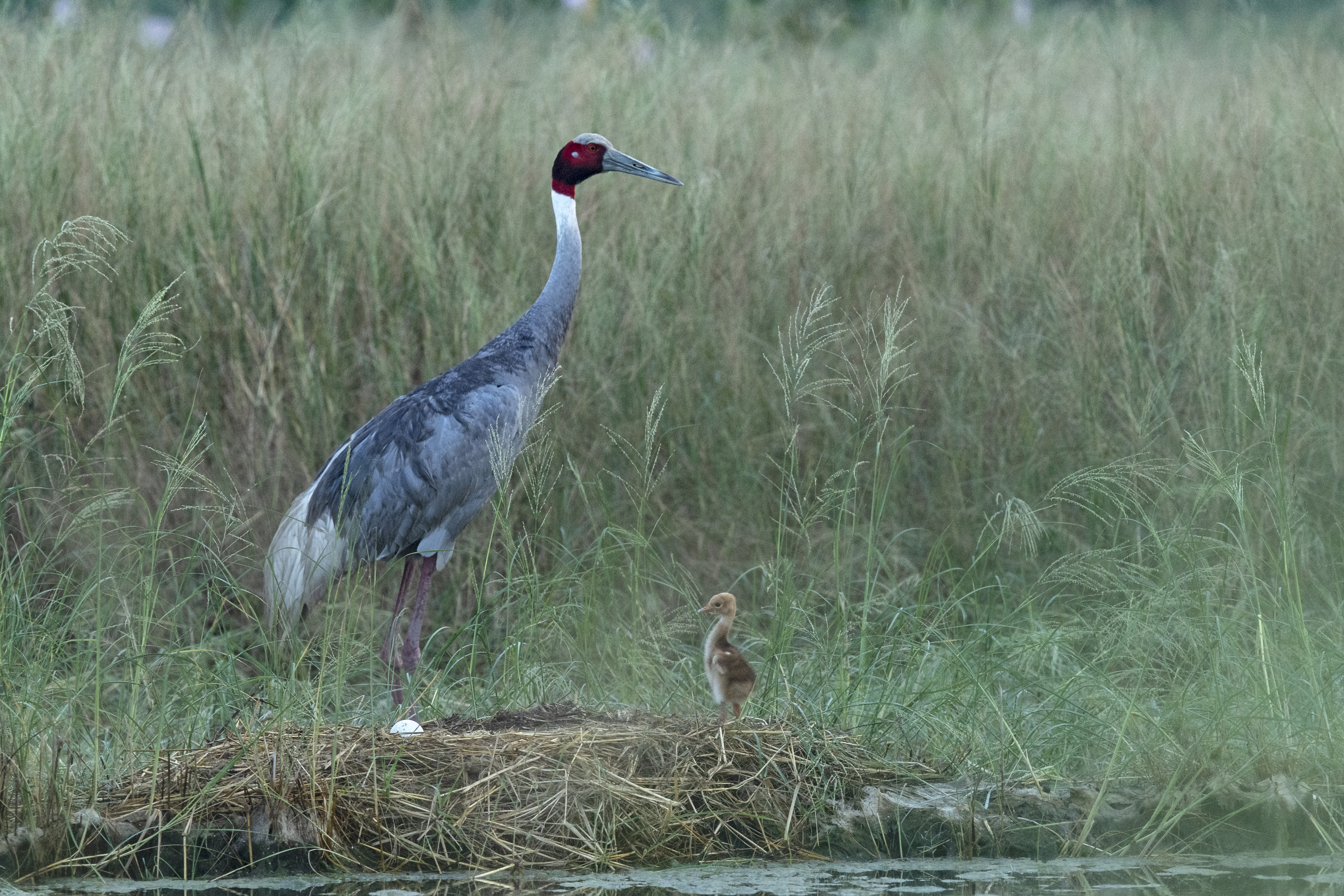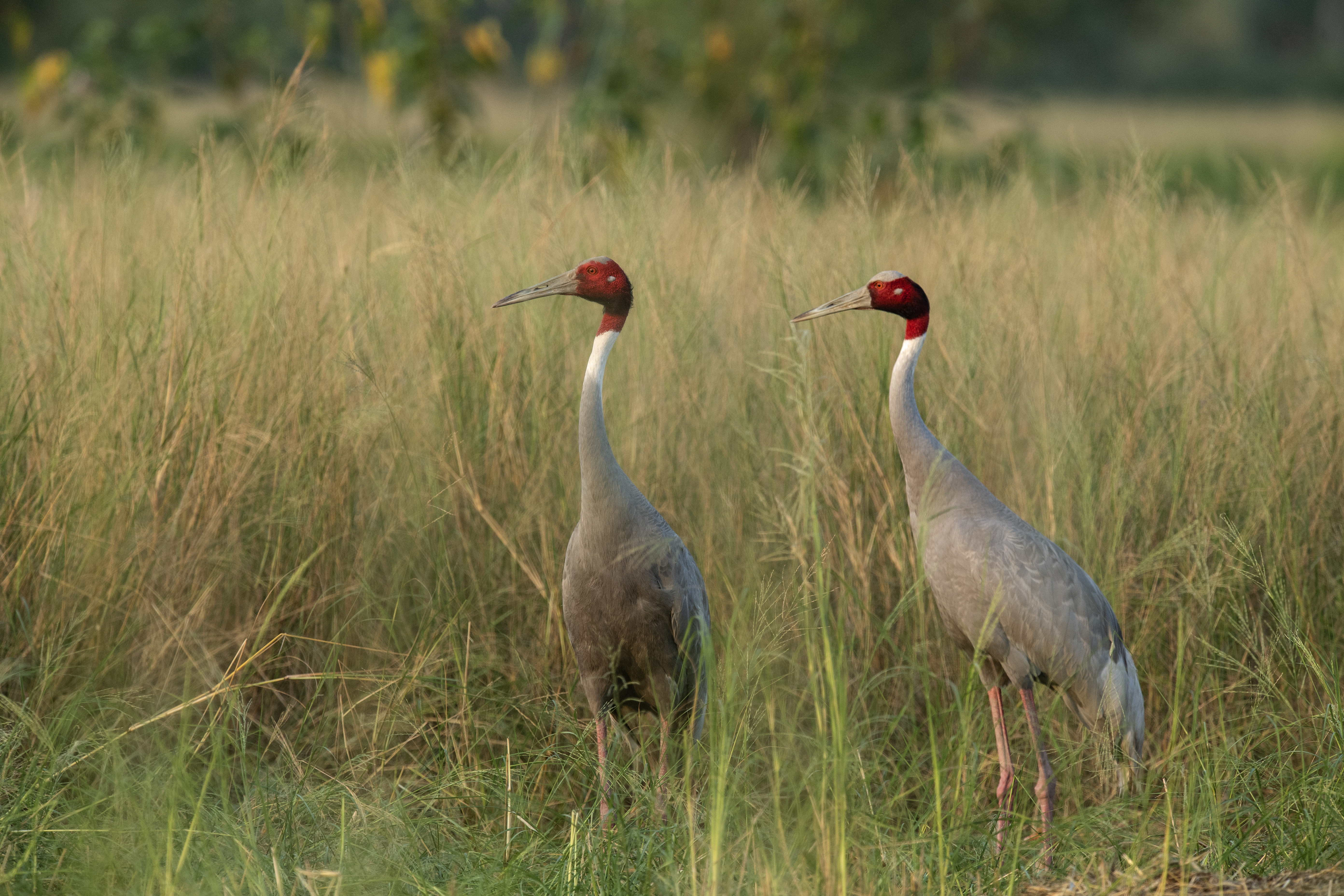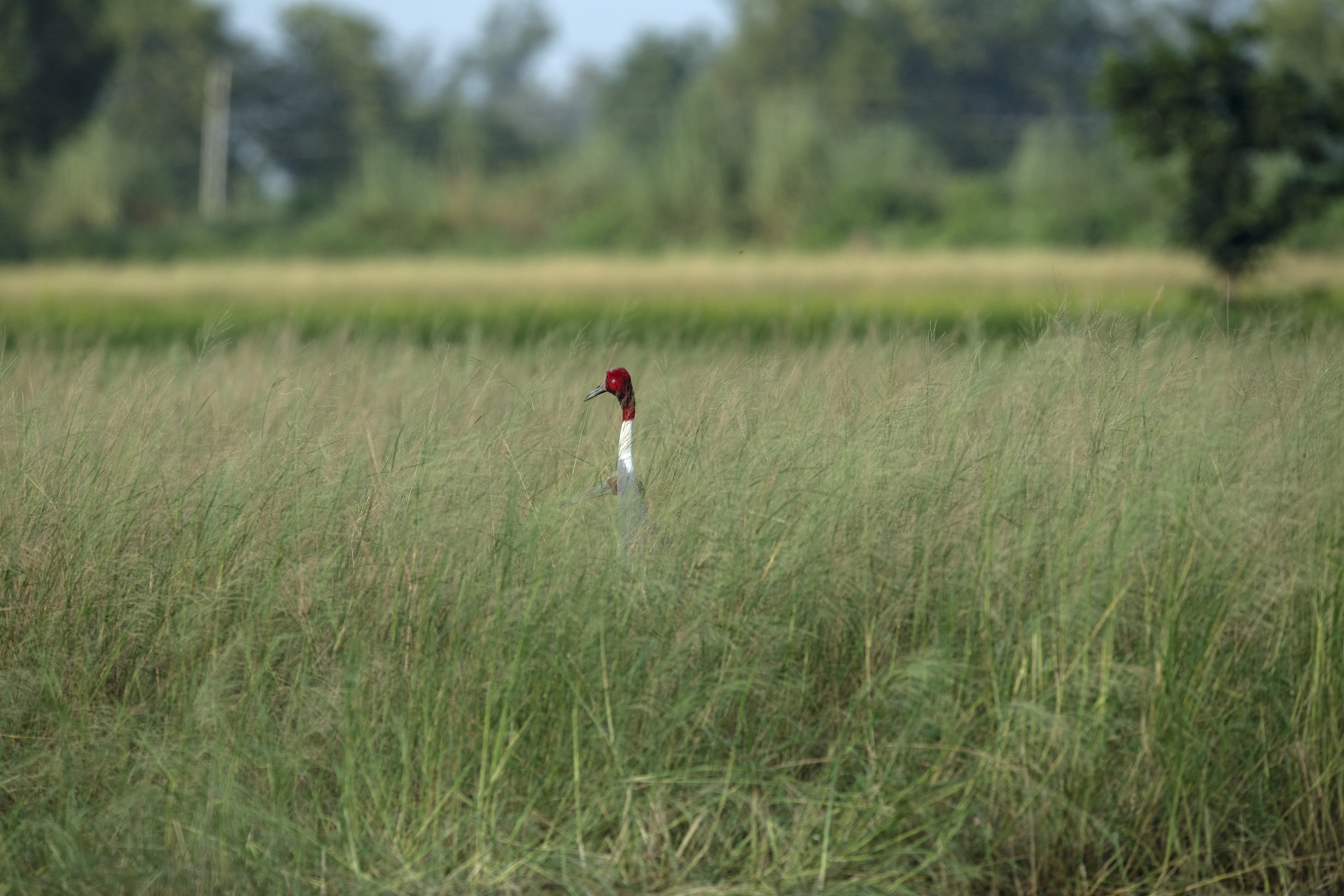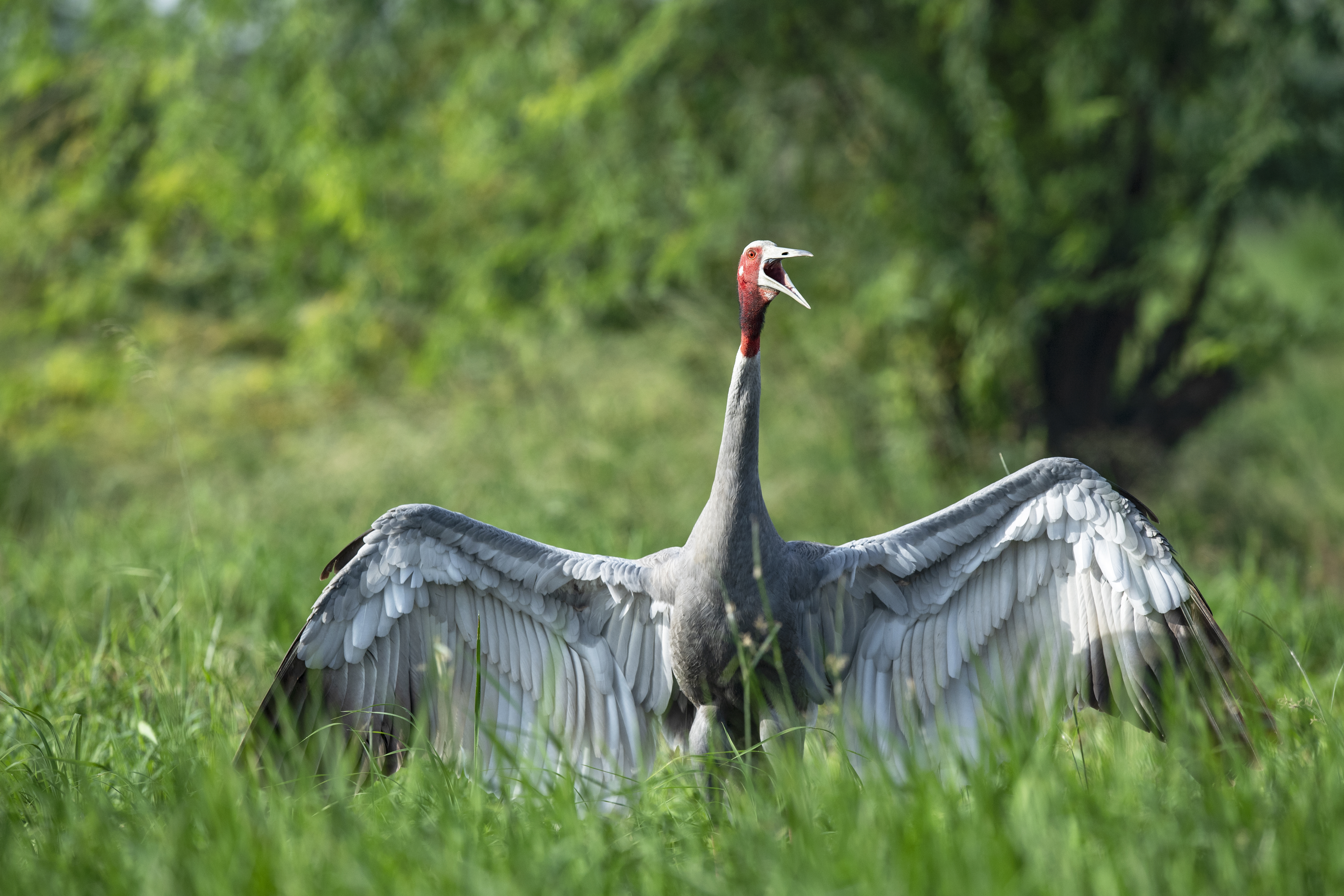Sarus- The gentle and caring flying giants
- shivaram1970
- Sep 19, 2018
- 2 min read

The elegant and beautiful Sarus cranes are amongst my favorite birds. They fascinate me a lot. After a long wait this year went to try and photograph their chicks. It is unbelievable that such large birds (the adults are more then 6 feet) have chicks that are so tiny.
These cranes make their nests on the ground in shallow water bodies or flooded fields to keep their eggs safe. It takes about 32 days for the eggs to hatch. In this period the female stays on the nest incubating the eggs. She feeds close to the nest. The cranes protect their nests very aggressively. Also The pair nests in the same area every year.

Once the eggs hatch the chicks start to swim immediately after the parents clean them. Normally if there is a second egg then it takes around 36-48 hours for it to hatch. When the female is incubating the second egg the newborn chick is taken care by the male.



After the first few hours of the eggs hatching the parents take the chicks into tall grass to hide them from predators. Like Dogs and raptors.


This year there has been unprecedented rains in UP and most farmers have lost crops. Good thing is most people in Rajasthan and UP revere the Sarus . when we were talking to a farmer in whose field the sarus had built its nest he was very tolerant of the Bird. The same was the case of another farmer who said the bird does not do much harm the crops as along with the little grain it eats it also eats up a lot of insects. But unfortunately all farmers don’t show the same kind of tolerance towards these birds. There is still great amount of ignorance and this leads to some throwing away nests with the eggs others shift the nest and the Birds abandon it. Also these birds are very aggressive in defending their nests and sometimes this leads to a confrontation between the farmer and the bird.
A female aggressively defending its nest as a farmer whose field it had built its nest in is trying to clear his field of rain water that had flooded his field and had destroyed his crop. But he still tolerated the bird.

A small video clipping to show how much damage the rains have caused to the paddy fields and how one has to wade through knee deep water



Comments